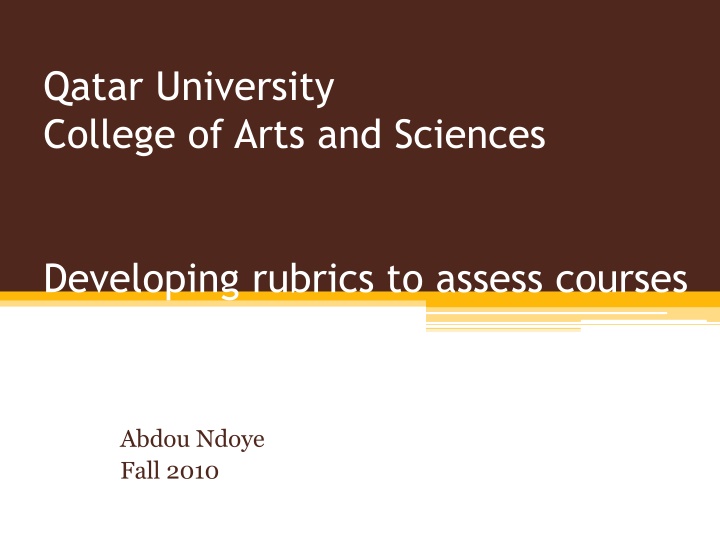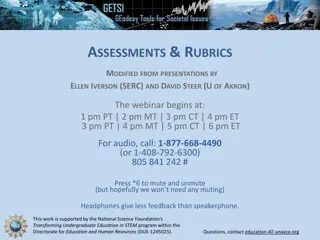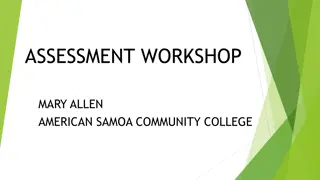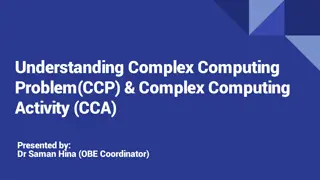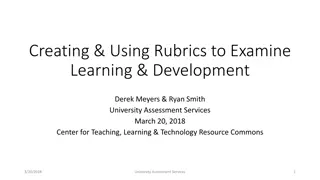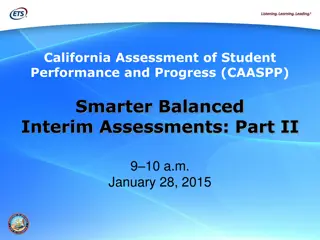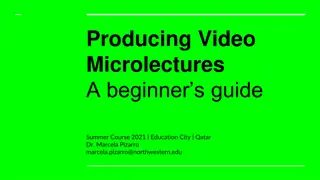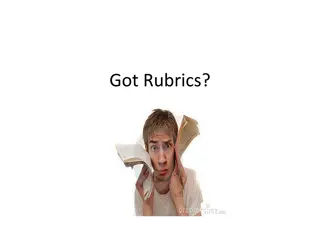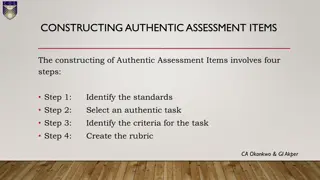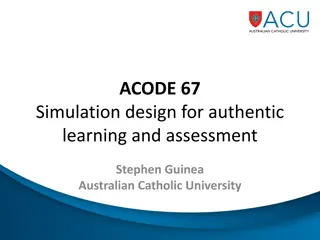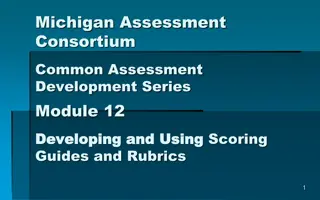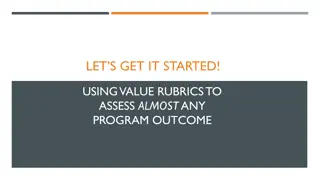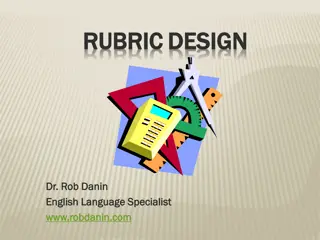Rubrics and Authentic Assessments in Course Evaluation at Qatar University
Workshop focused on developing rubrics for assessing courses at Qatar University College of Arts and Sciences. It covers the rationale for using rubrics, different assessment types, challenges of authentic assessment, and the role of rubrics in ensuring consistency and reliability in evaluating student performance.
Download Presentation

Please find below an Image/Link to download the presentation.
The content on the website is provided AS IS for your information and personal use only. It may not be sold, licensed, or shared on other websites without obtaining consent from the author.If you encounter any issues during the download, it is possible that the publisher has removed the file from their server.
You are allowed to download the files provided on this website for personal or commercial use, subject to the condition that they are used lawfully. All files are the property of their respective owners.
The content on the website is provided AS IS for your information and personal use only. It may not be sold, licensed, or shared on other websites without obtaining consent from the author.
E N D
Presentation Transcript
Qatar University College of Arts and Sciences Developing rubrics to assess courses Abdou Ndoye Fall 2010
Workshop objectives and learning outcomes Workshop Objectives Learning Outcomes : at the end of this workshop, participants will be able to Identify the rationale and purposes for using rubrics Distinguish holistic from an analytic rubric Apply the principles of designing a good rubric to revise existing rubrics in use in their courses or create new ones. Present the rationale and purposes for using rubrics Review different types of rubrics Present an overview of principles of designing a good rubric
Assessment and rubrics Two types of assessment : Traditional assessments (tests) Norm referenced assessment : Performance is compared based on a norm ( SAT) Authentic assessment Criterion referenced assessment : Assessments in which we evaluate students performance based on a set of criteria ( Students performing lab procedures )
Rubric as one of the tools Why rubrics Authentic assessment Allows students to perform a real world task Demonstrates combination of different skills and competencies Performance or product required Focuses on learning outcomes Challenges ( More difficult to design and assess )
Challenges of authentic assessment Harder to assess and more complex ( it is easier to assess a multiple choice than a term paper) No obvious set of criteria Risks of personal bias Combines different competencies and skills Rubric is a tool that can help solve these problems
Rubrics and authentic assessments Rubrics are hard to design Rubrics take time and are constantly reviewed and adapted Opportunities for reliability across instructors ( reduces personal bias) clear set of expectations ( no ambiguity between performance criteria or scale ) Guidelines for scoring Rubrics provide students with a self assessment tool to improve learning Communication tool for consistency
Types Holistic : Looks at the product or performance as a whole Analytic Breaks the performance or product into criteria( Dimensions) See Handout for examples
Overview of principles of designing a good rubric
Principles of designing good rubrics Break down performances in specific sets of skills and criteria Aim for clear and concise descriptors ( scale and criteria should be exclusive , and also clearly stated) ( avoid ambiguous words as much as you can ( often, rarely, meaningful etc ) Use specific and observable criteria or provide for a way to accommodate them ( Creative and thoughtful) Keep it to what is essential ( avoid lengthy and cumbersome rubrics ). .lengthy rubrics only gather dust (Benjamin 23) Descriptors and performance levels should be clear ( equal step between scales) the difference between 4 and 3 should the same as the difference between 3 and 2 List skills consistently in a continuum across levels Link assignment to rubrics Shared with colleagues : Have colleagues review and check it for you Apply and readjust
Steps See Handout Task Break down tasks into attributes (criteria) Develop levels of performance Describe each criteria and level
Task : Students are asked to do a presentation on the components of a healthy food pyramid What are the criteria for the presentation ? What dimensions will you look for? What are the expected levels of performance? Decide also on your point value What do you expect from students for each these criteria ? Those are your descriptors. Meet expectations Student makes eye contact Criteria Engaging the audience Student engaged audience through questioning Content of the presentation Relevance
References Allen, N . (20xx). Designing Rubrics. A PowerPoint presentation. Benjamin, A.(2000). An English teacher s guide to performance tasks and rubrics. Larchmont: Eye on Education. How to Create Rubrics . Retrieved from : http://www.mark- ed.com/assessment/HowToCreateRubric s.htm
